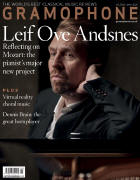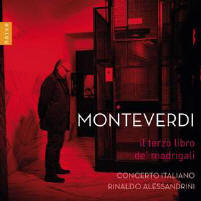Texte paru dans: / Appeared in: |
|
|
Outil de traduction (Très approximatif) |
|
|
Reviewer:
Alexandra Coghlan ‘Prima le parole, dopo la musica’ – we all know the score when it comes to Monteverdi. But, as Rinaldo Alessandrini reminds us in his introduction to this latest in a series of Monteverdi recordings stretching back over 30 years, it’s not quite that simple. Alessandrini draws attention to the important distinction the composer makes between recitar cantando (speaking through song) and cantar recitando (singing through speech) – this, he reminds us, is the fine line that determines all, especially when it comes to the transitional madrigals of the 25-year-old Monteverdi’s Book 3 – on the cusp of musical philosophies and styles, caught between the polyphonic prima pratica and theatrical seconda pratica. The negotiation here is subtle. Alessandrini amplifies the musical variety within the book, emphasising the vertical clarity and blend in truly polyphonic madrigals such as ‘O primavera’ and ‘La giovinetta pianta’ while highlighting the rhetorical shifts between third- and firstperson narrative in ‘Sovra tenere erbette a bianchi fiori’ and ‘Rimanti in pace’, and moving into still more overt musical drama in the cycle ‘Vattene pure, crudel’ with its hints of the concitato style to come. The latter’s range is less extreme than in Alessandrini’s earlier account (‘Madrigali sui testi di Tasso’ – Tactus, 2012), where Armida’s chromatic swoon takes us into near sound-effect territory and generally the sound is plusher, more consistently handsome, though still as dark-hued as ever. The obvious comparison is with La Venexiana’s fine recording on Glossa – probably the go-to up until now. Cavina’s singers have a blossomy lightness of tone (particularly the lower voices) that comes into its own in the madrigals of spring and birdsong, giving them real buoyancy. With Concerto Italiano we get more chiaroscuro in the tone, a broader canvas and bigger gestures that feel more organic than La Venexiana’s occasionally micromanaged articulation. Ultimately both are recordings to return to, a complementary pair that keep the debate over words and music very much alive.
|
|




